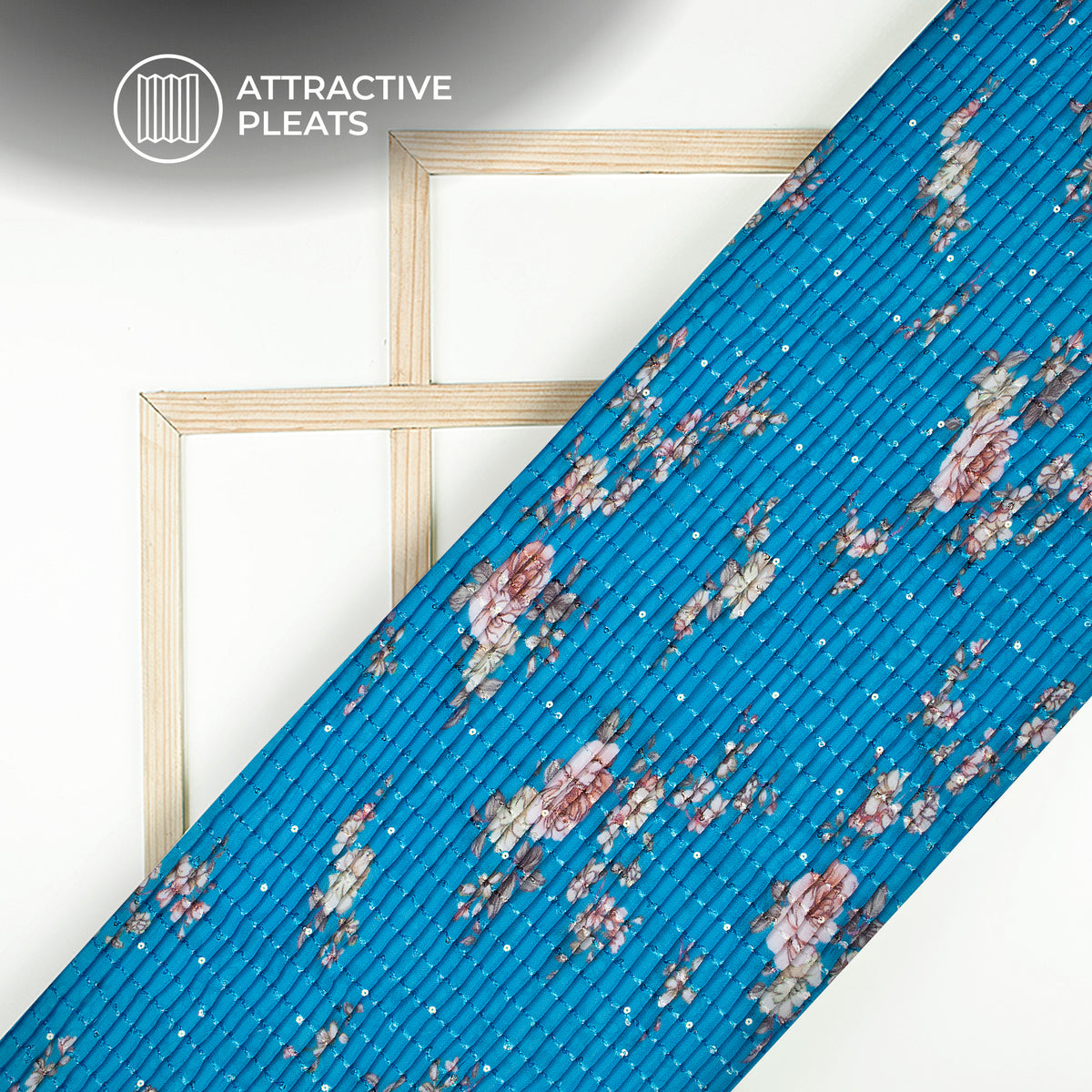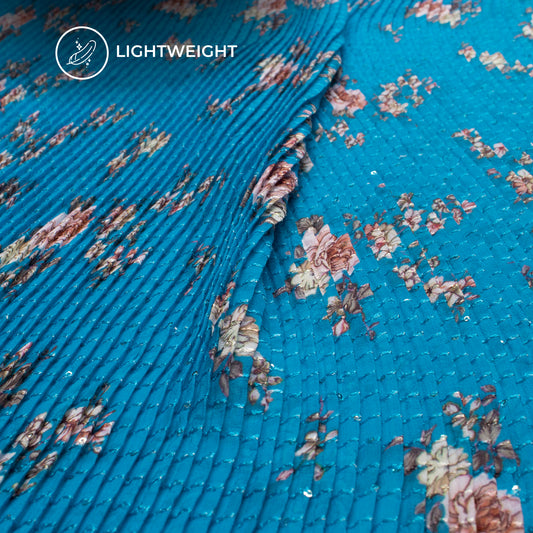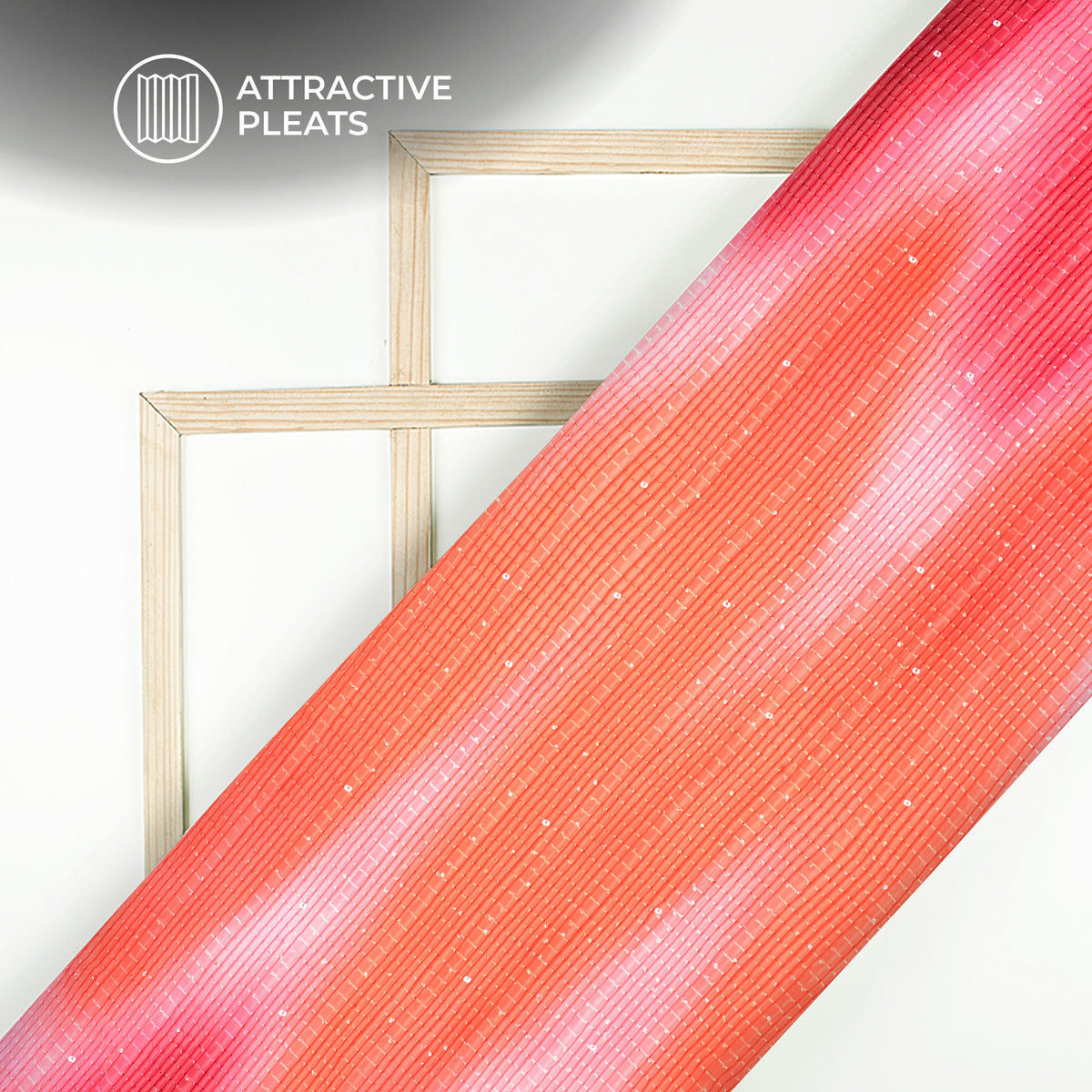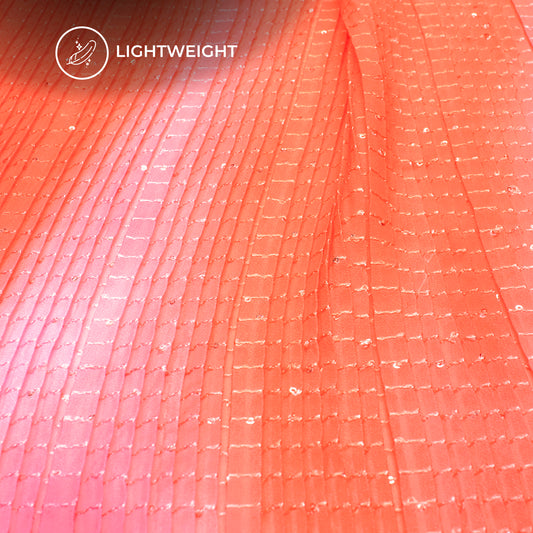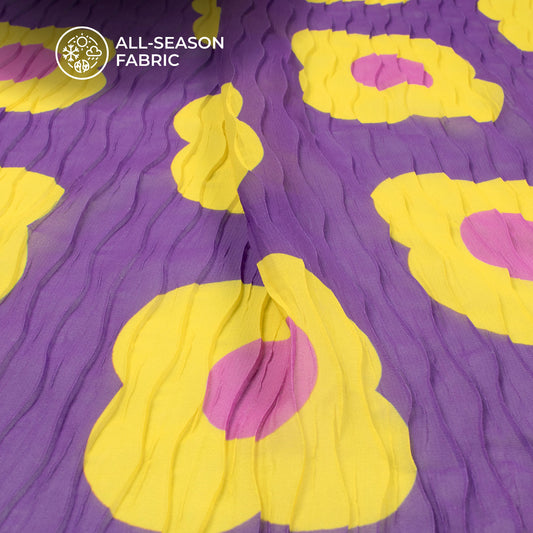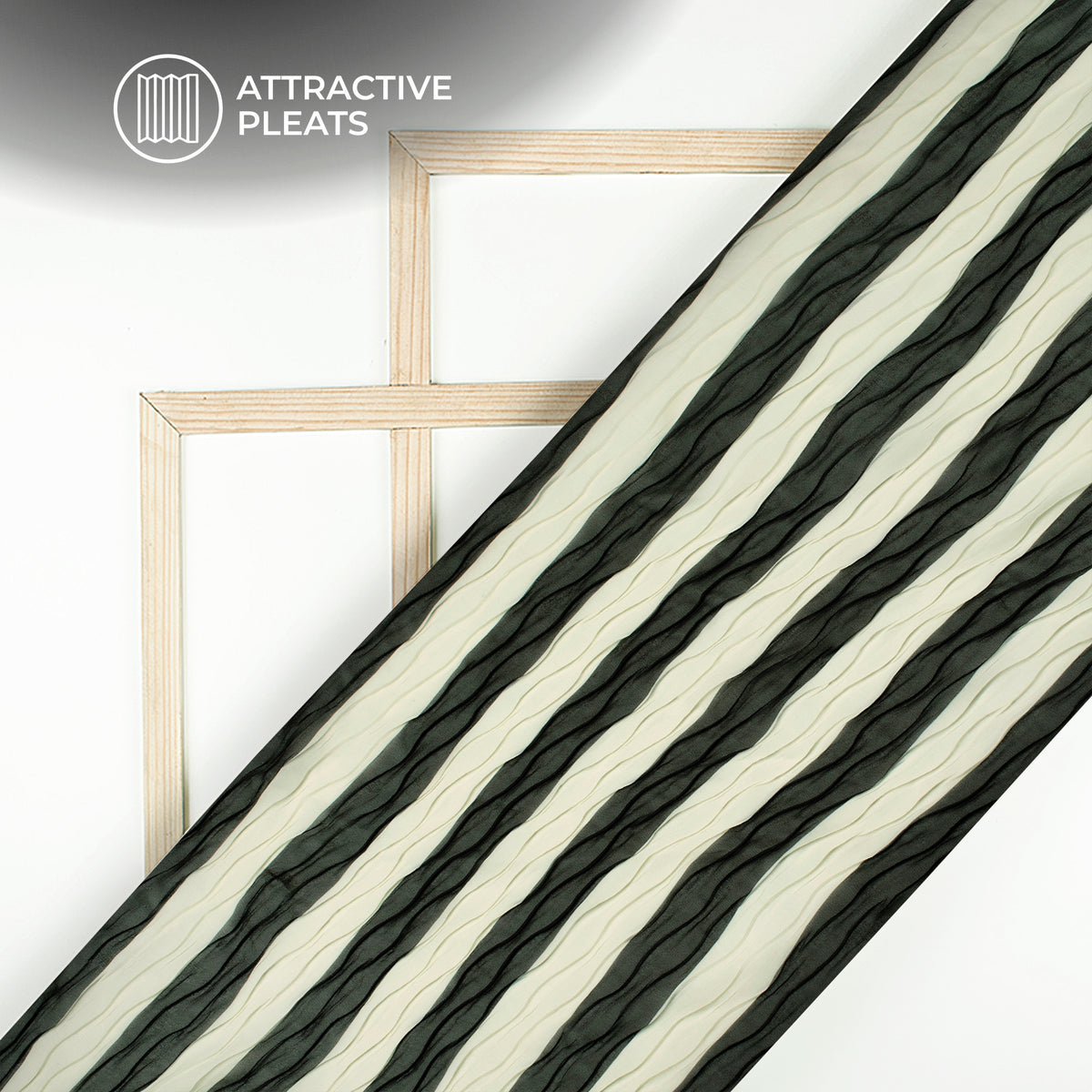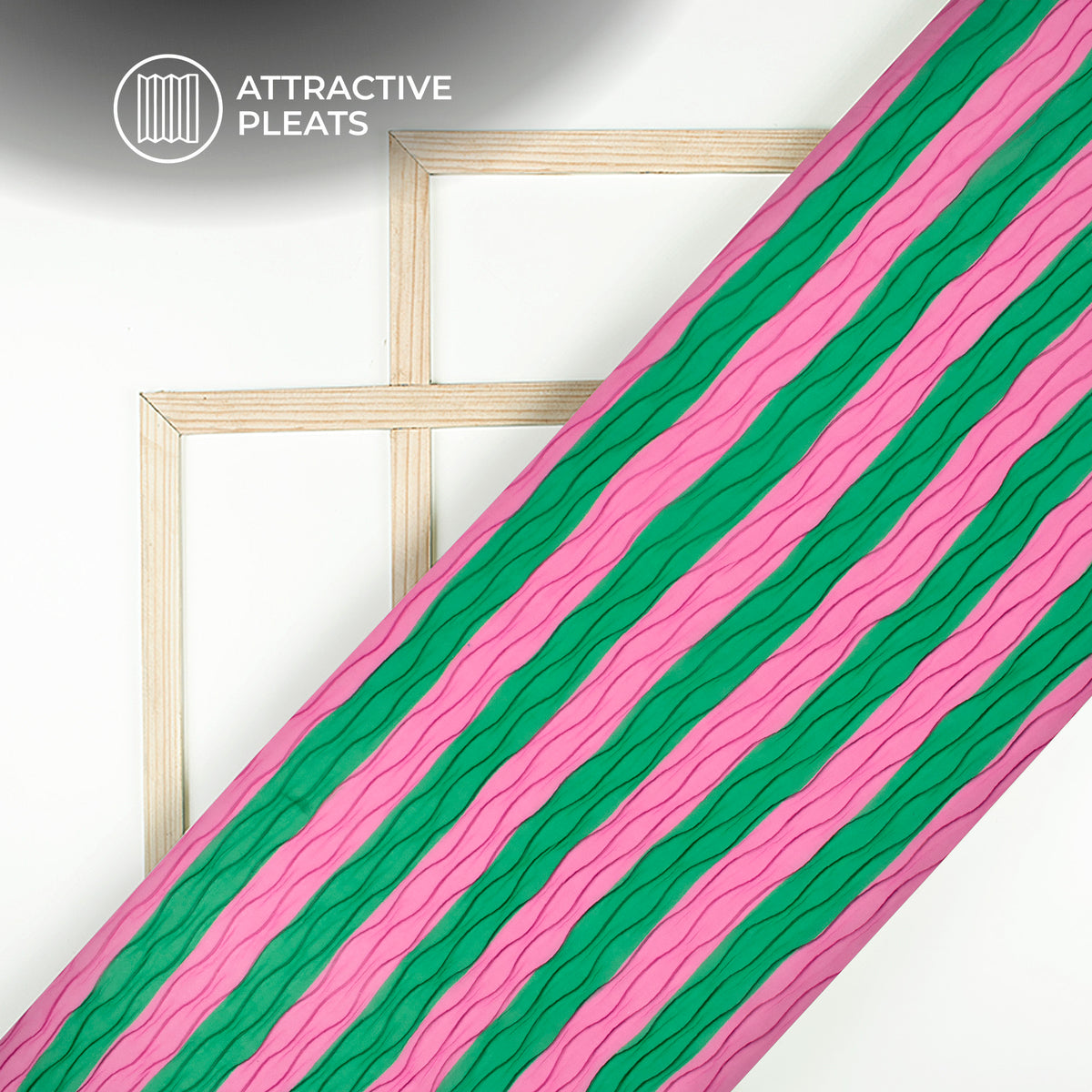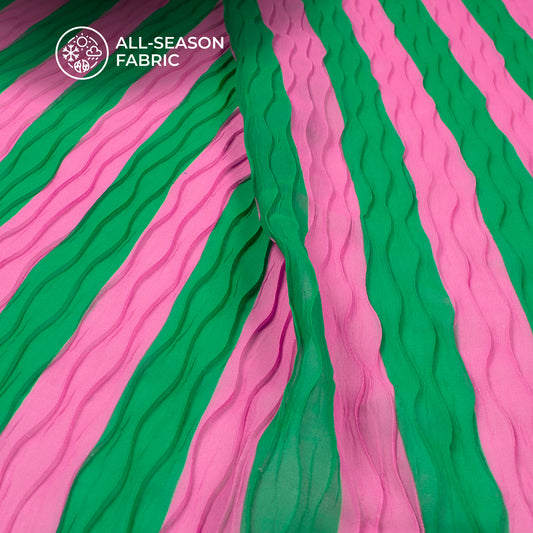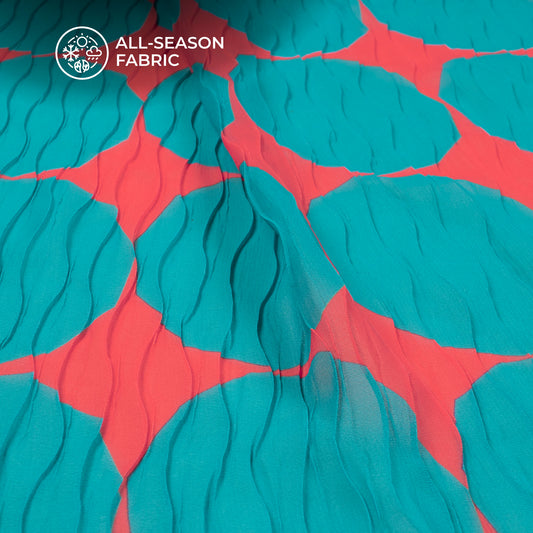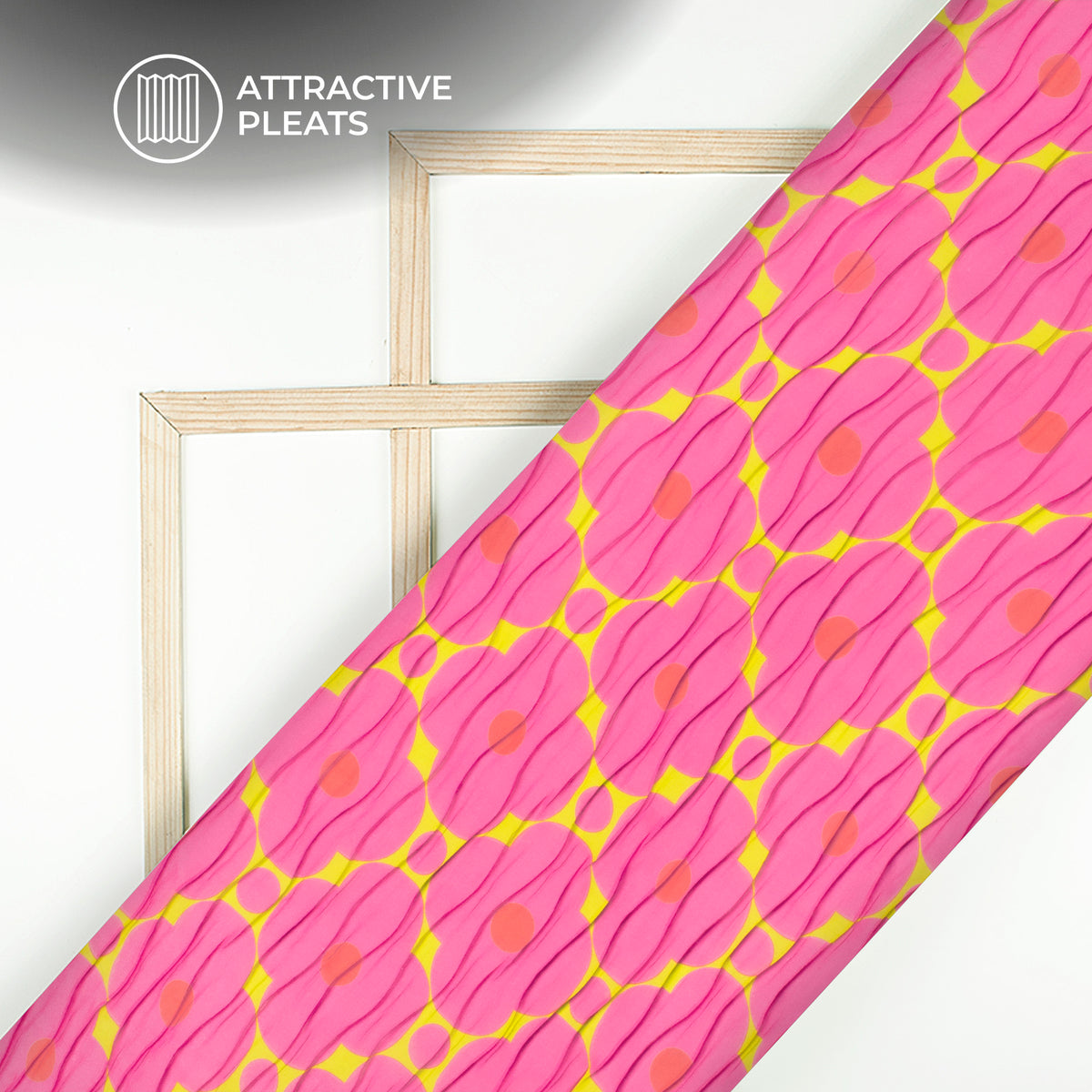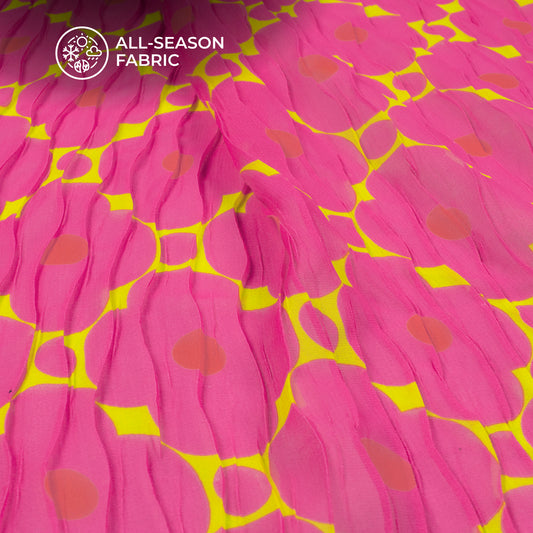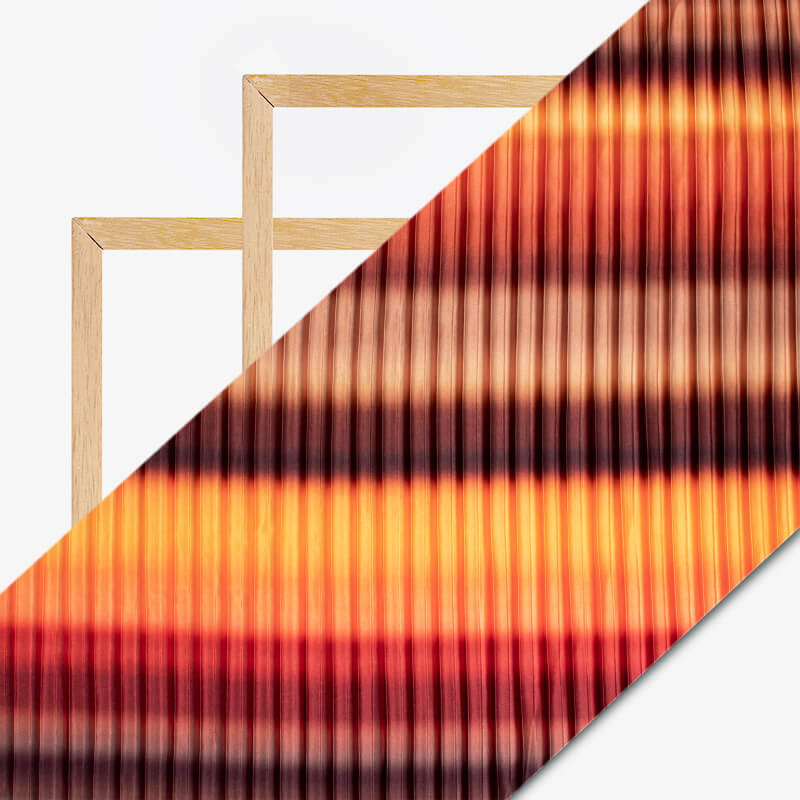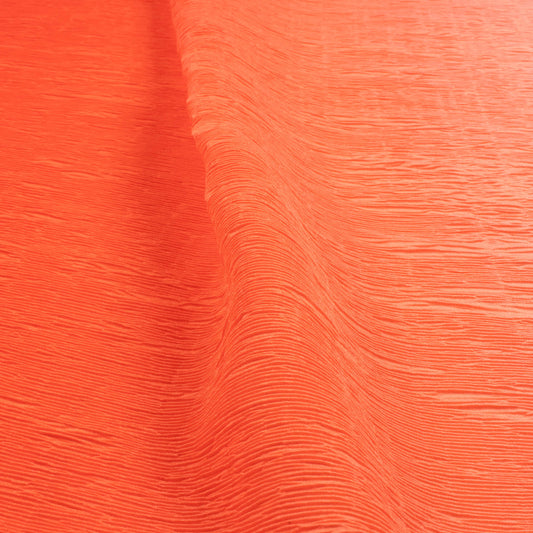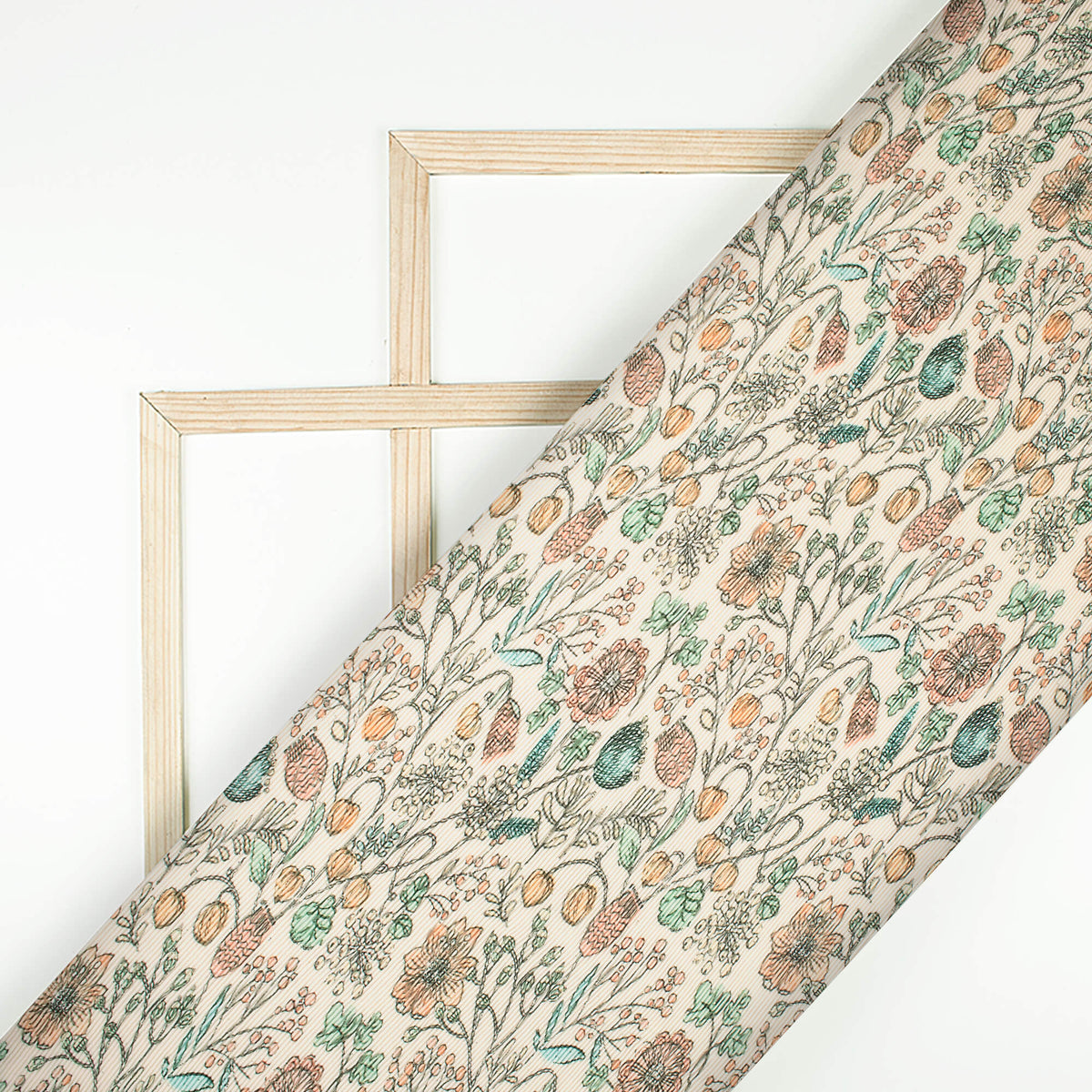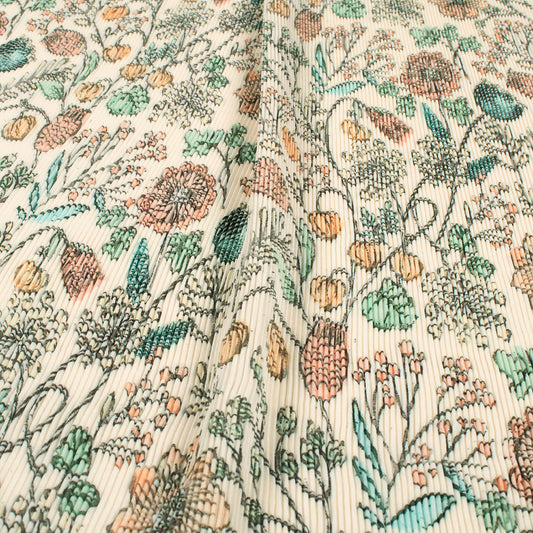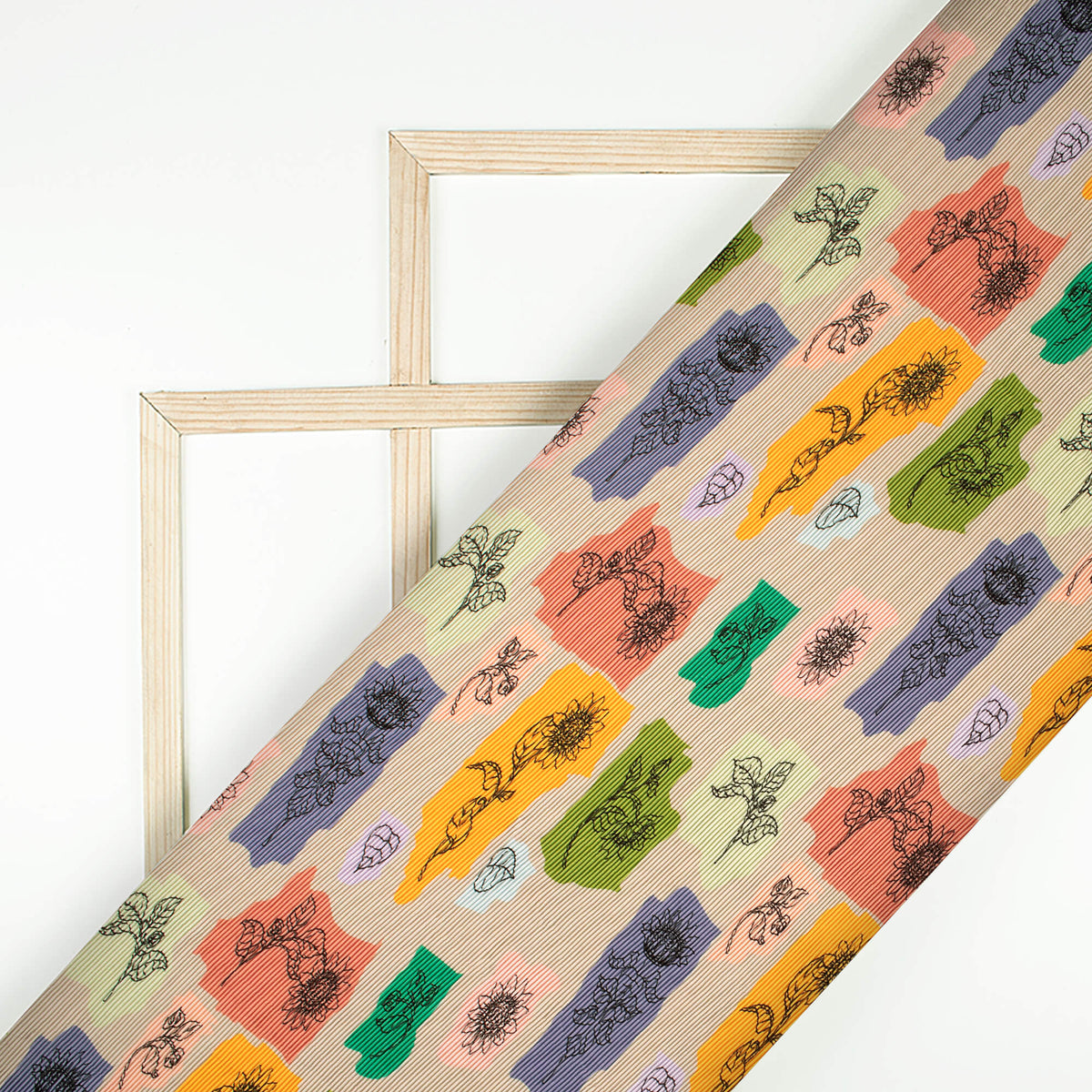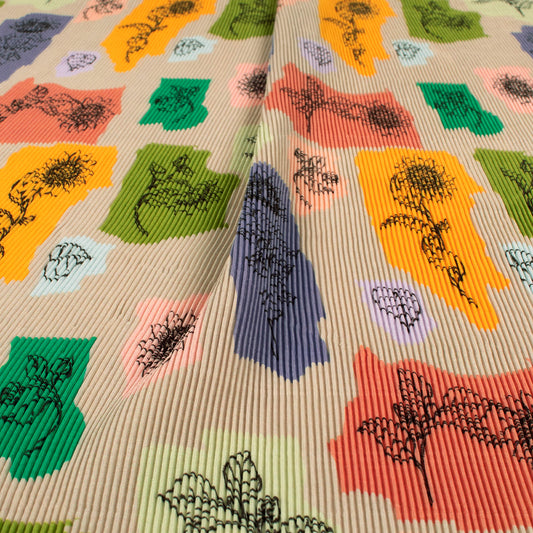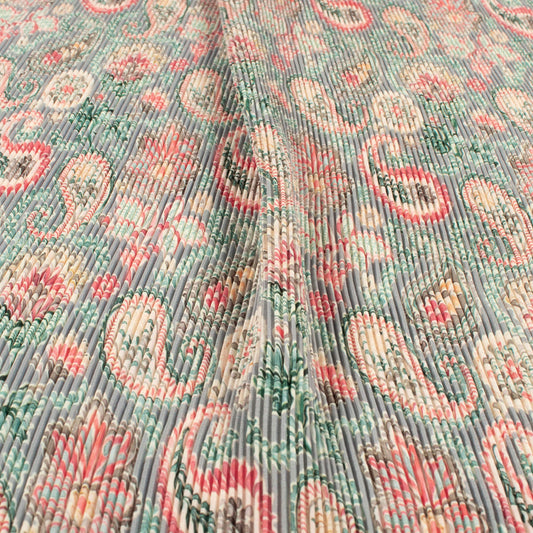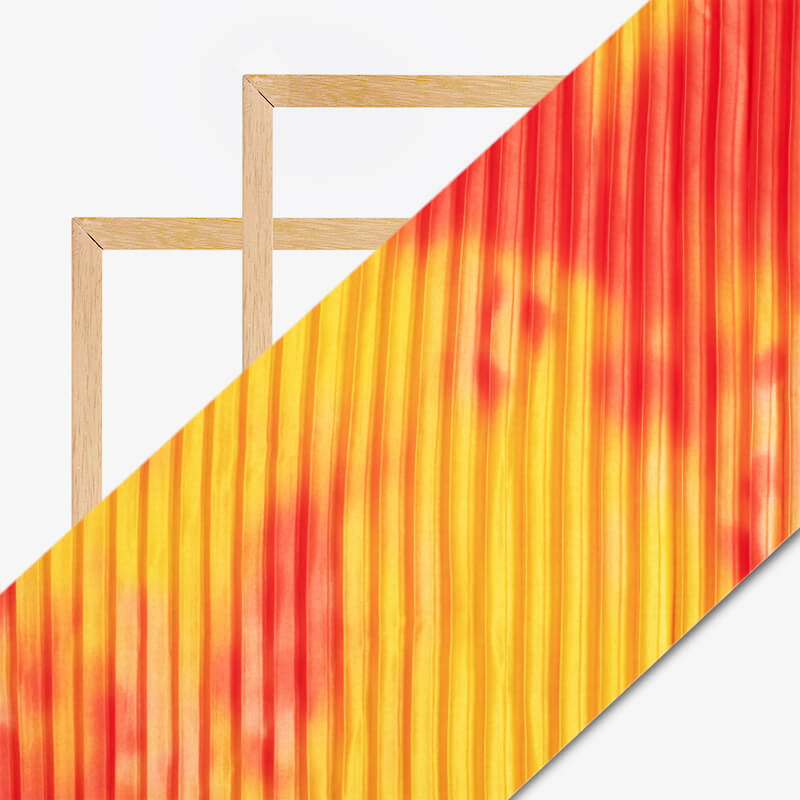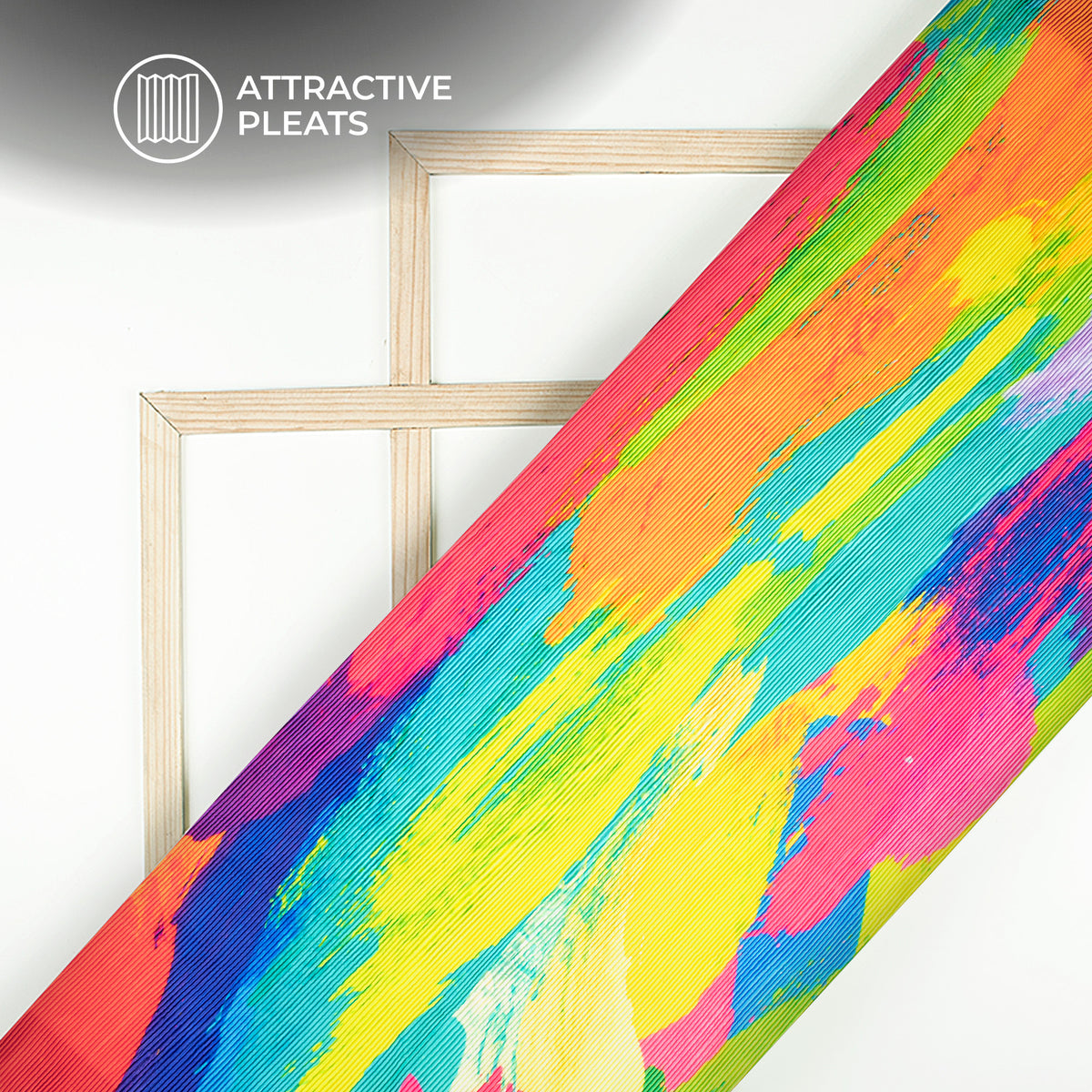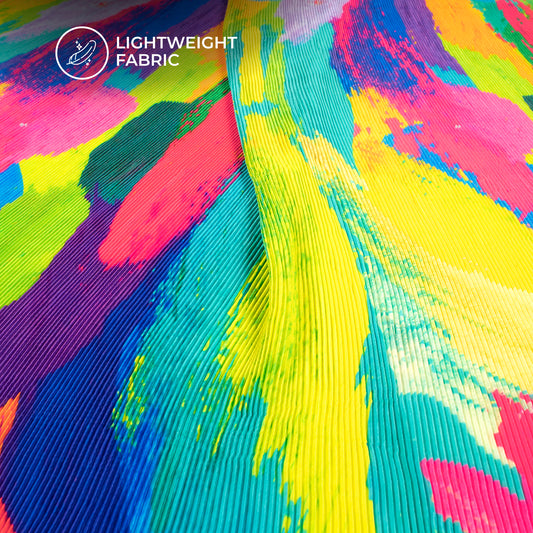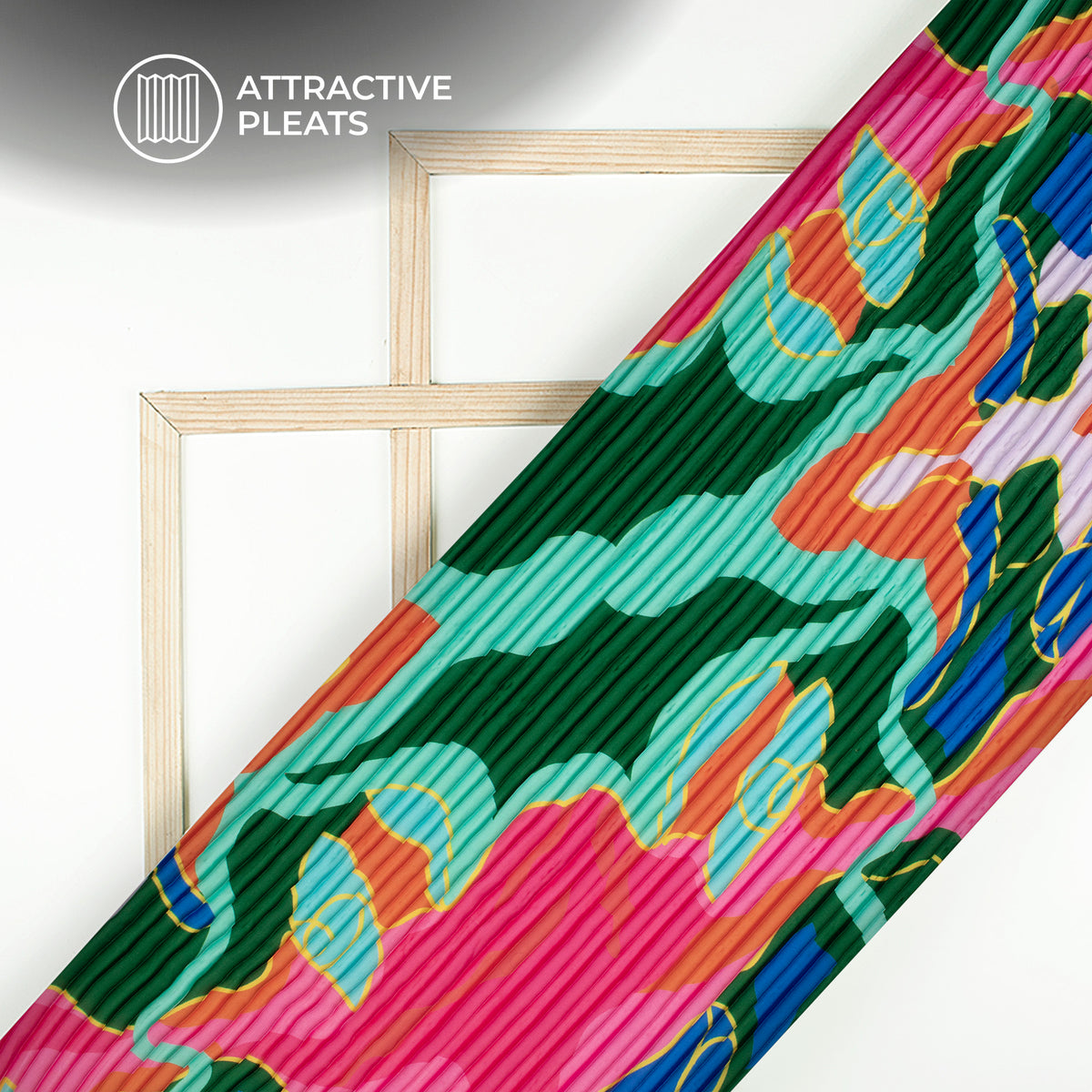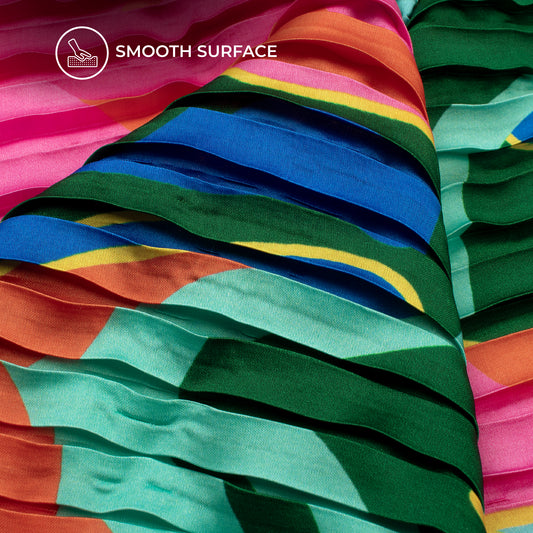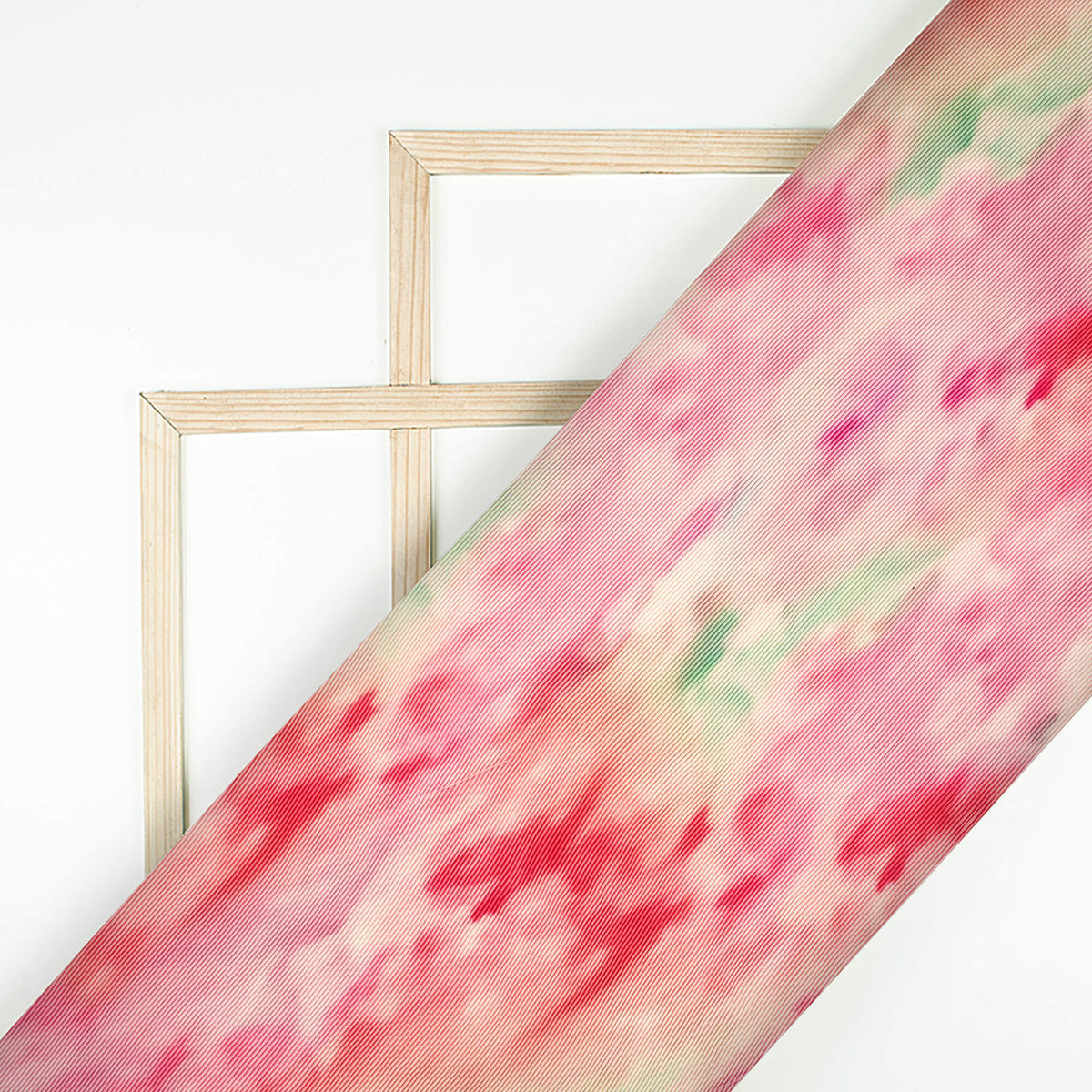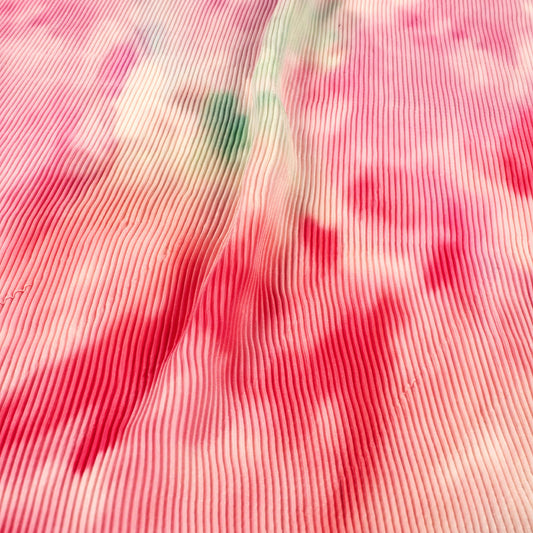Collection:
Printed Pleated Fabric...
The Defined Fold: Unveiling the Essence of Pleats in Fashion and Fabric
In the dynamic world of fashion and textile design, seemingly simple techniques can yield transformative results. Among these, the art of creating fabric pleats stands out for its ability to introduce structure, movement, and a touch of refined elegance. Whether adorning a flowing georgette skirt or adding tailored sharpness to trousers, pleats are a fundamental element that every fabric enthusiast and designer should appreciate. So, what exactly constitutes a pleat, and why has this technique endured through countless style evolutions? Let's delve into the fascinating folds that define so many garments.
What is a Pleat?
At its most basic, a pleat is a fold in fabric that is intentionally created and secured, typically by pressing and sometimes by stitching. The primary purpose of a pleat is to shorten the length of a fabric section while simultaneously introducing fullness or a specific shape. Unlike gathers, which create soft, irregular folds, pleats are characterized by their deliberate and often crisp formation. The way a pleat is folded and its orientation significantly impact the final look and feel of the garment.
6 Key Characteristics of a Pleat:
-
Structured Formation: Pleats are defined by their controlled and often sharply pressed folds, lending a sense of order and intentional design to the fabric.
-
Volume and Movement: A core function of pleats is to add volume and allow for greater ease of movement in garments, transforming flat fabric into flowing silhouettes.
-
Length Adjustment: By strategically folding the fabric, pleats effectively reduce the length of a fabric panel without requiring cutting, preserving the material's integrity.
-
Textural Dimension: The repetition of precisely formed pleats creates a unique visual and tactile texture, adding depth and interest to the fabric surface.
-
Shaping and Fit: Carefully placed pleats can contour garments to the body, accentuating natural lines and providing a more tailored and flattering fit.
-
Design Element: Beyond their functional uses, pleats serve as a significant design feature, contributing to the overall aesthetic and style of a garment, from classic to contemporary.
5 Distinct Varieties of Fabric Pleats:
The versatility of pleats is evident in the diverse range of styles they encompass:
-
Knife Pleats: These are the most common type, featuring folds that are pressed to lie flat in one direction, creating a clean, streamlined appearance.
-
Box Pleats: Formed by two knife pleats facing away from each other, resulting in a flat, box-like section at the top and releasing fullness below.
-
Inverted Pleats: Similar to box pleats, but with the folds meeting on the face of the fabric, creating a seam-like detail.
-
Accordion Pleats: Characterized by narrow, evenly spaced folds that create a continuous zig-zag pattern, resembling the bellows of an accordion.
-
Kick Pleats: Shorter pleats typically found at the back of skirts or dresses to allow for ease of movement without disrupting a straight silhouette.
Fabric Care Guide: How to Care for Pleated Fabric:
Maintaining the crispness and structure of pleats requires mindful care:
-
Refer to Fabric Care Label: Always prioritize the care instructions specific to the fabric type (e.g., delicate georgette may require hand washing).
-
Gentle Washing: Hand washing or a delicate machine cycle is often recommended for pleated garments to prevent distortion of the folds.
-
Careful Pressing: When ironing pleats, follow the existing fold lines meticulously. Use a low to medium heat setting and a pressing cloth to protect the fabric. For some pleats, it may be helpful to use pins to secure the folds while pressing.
-
Professional Cleaning: For intricate or permanently pressed pleats, professional dry cleaning is often the safest option to ensure the pleats retain their shape.
-
Proper Storage: Hang pleated garments to prevent the pleats from losing their sharp creases. Skirts with deep pleats can benefit from using clip hangers on the waistband.
The Diverse Applications of Pleats in Fashion:
Pleats are a versatile design element found in a wide array of clothing items:
-
Skirts: To add volume, create specific silhouettes (A-line, flared), and provide design interest.
-
Trousers: To create a tailored fit, allow for movement, and add stylistic details like front or back pleats.
-
Dresses: To shape the bodice, add fullness to the skirt, and create decorative accents.
-
Blouses and Tops: As design features on sleeves, cuffs, or the body of the garment.
-
Formal Wear: To add sophisticated detailing and structure to evening gowns and tailored suits.
From the subtle elegance of a single kick pleat to the dramatic flair of accordion pleats on a georgette dress, the artful fold plays a crucial role in shaping our wardrobes. Understanding the nuances of fabric pleats empowers both creators and consumers to appreciate the intricate details that make clothing both functional and beautiful.
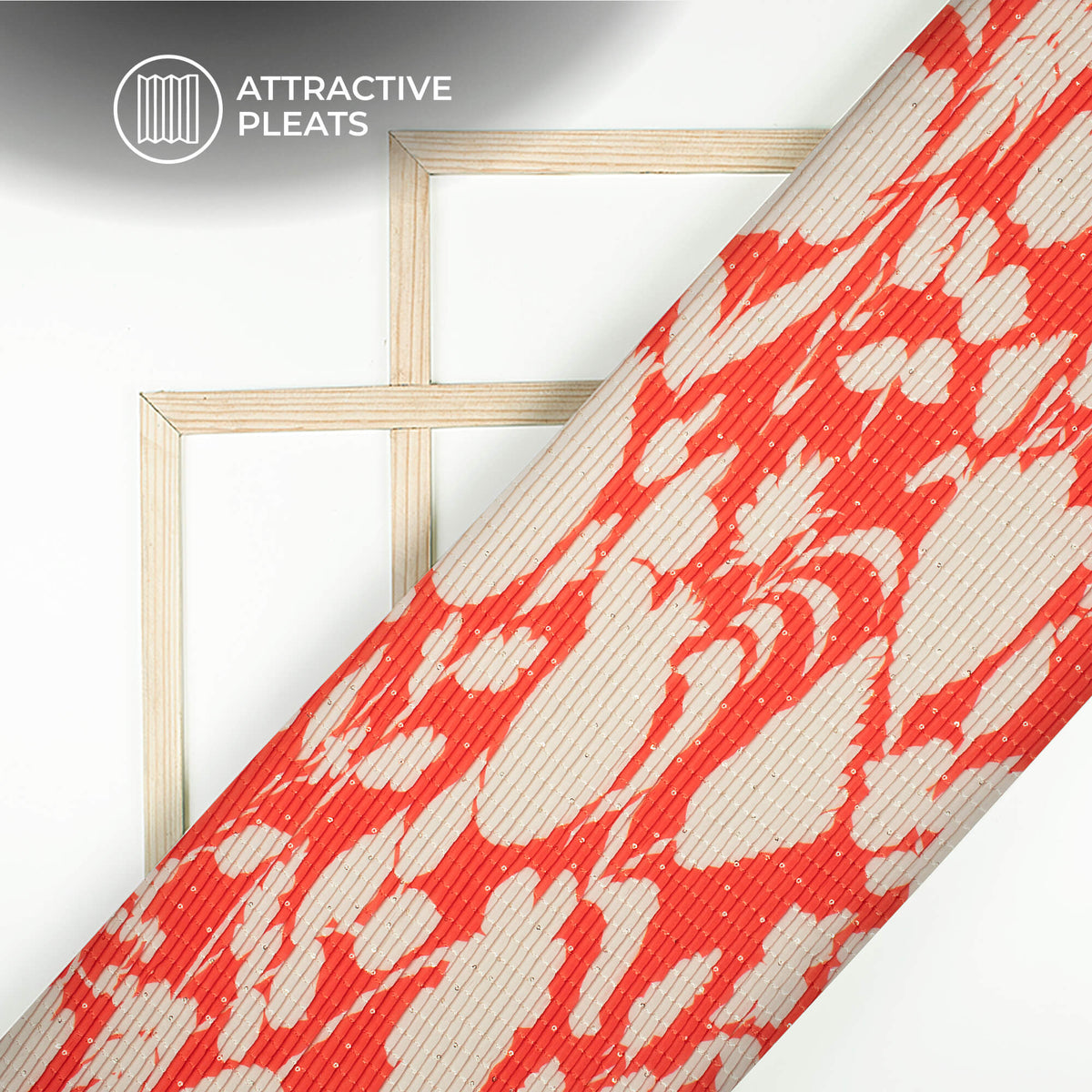
 -5% off
-5% off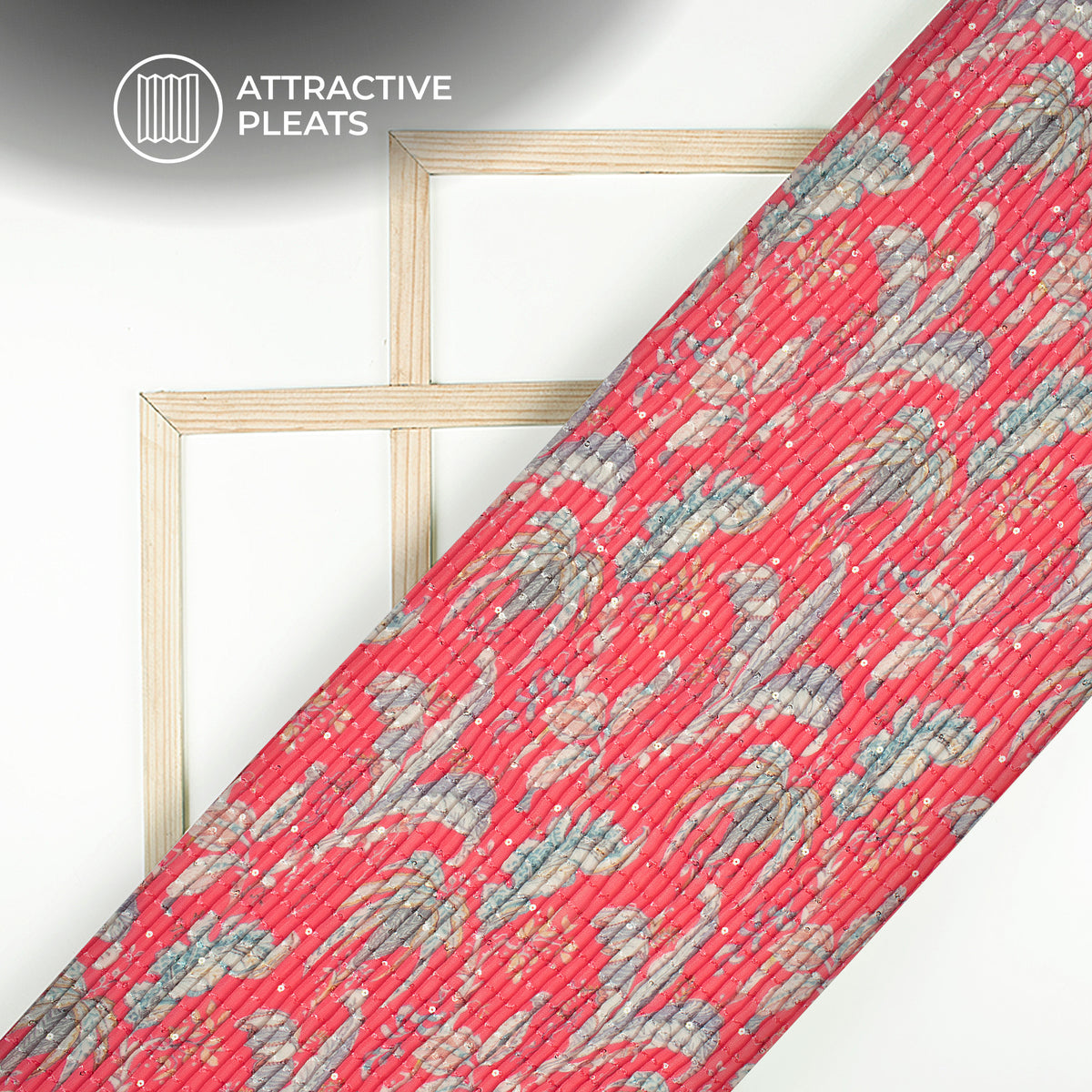
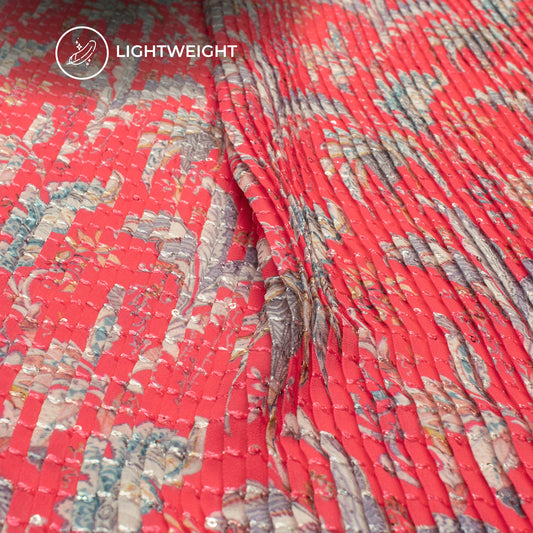 -5% offRegular price ₹ 849.00 /meterUnit price perSale price ₹ 849.00 Regular price
-5% offRegular price ₹ 849.00 /meterUnit price perSale price ₹ 849.00 Regular price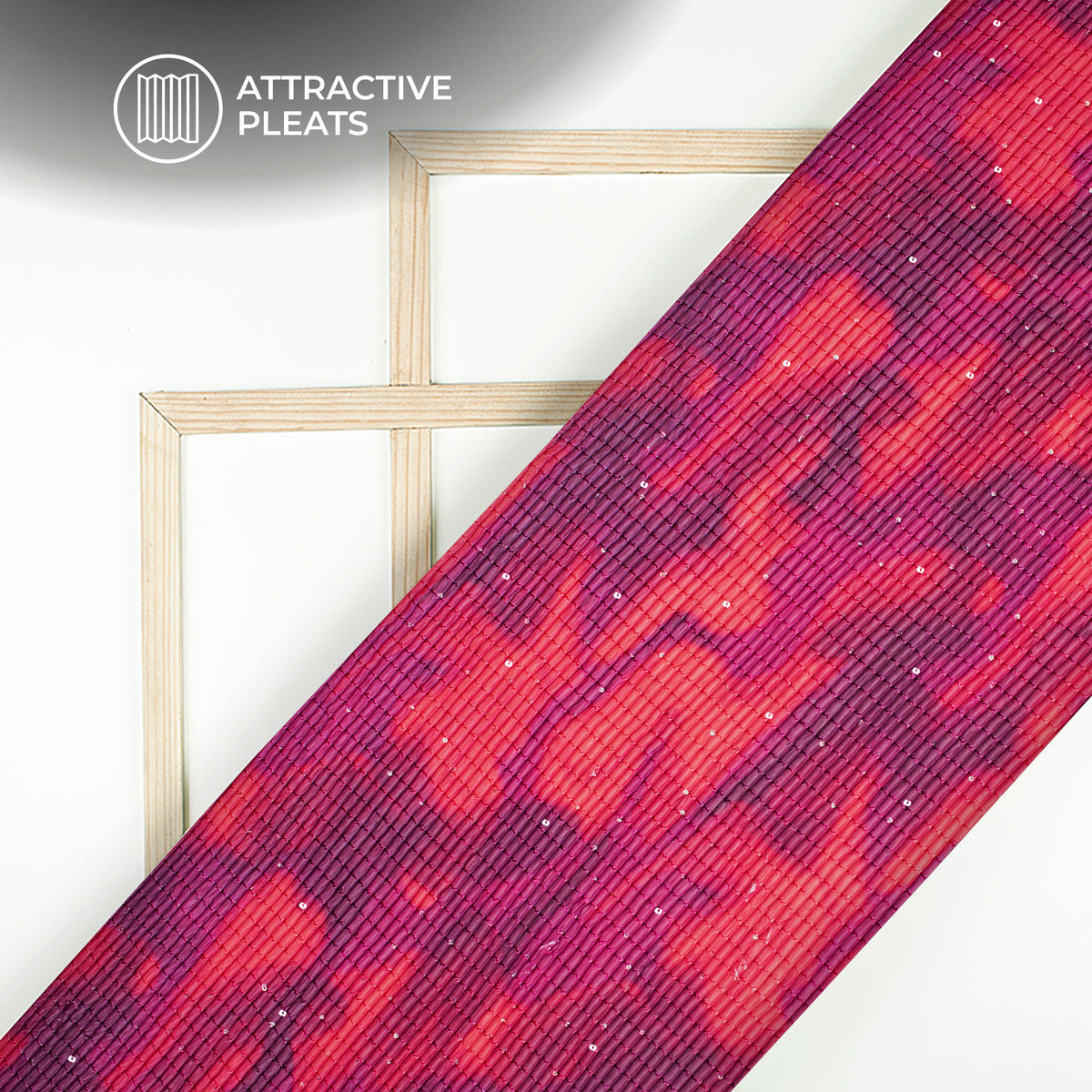
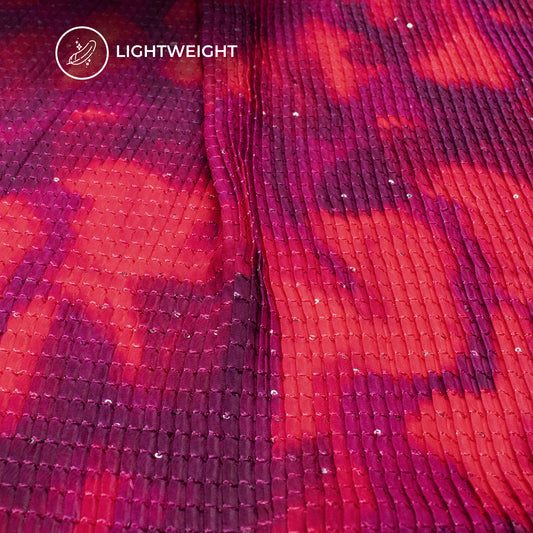 -5% off
-5% off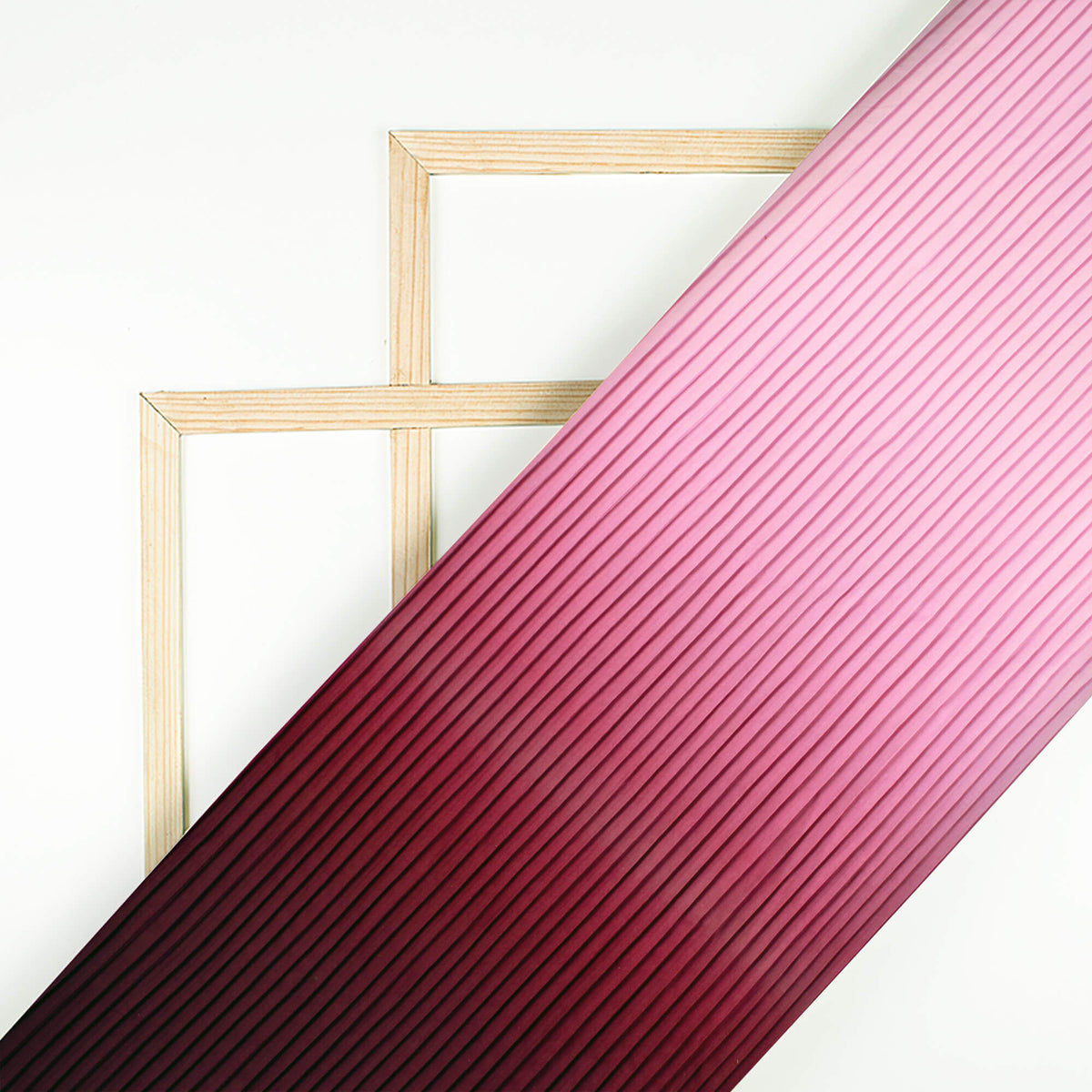
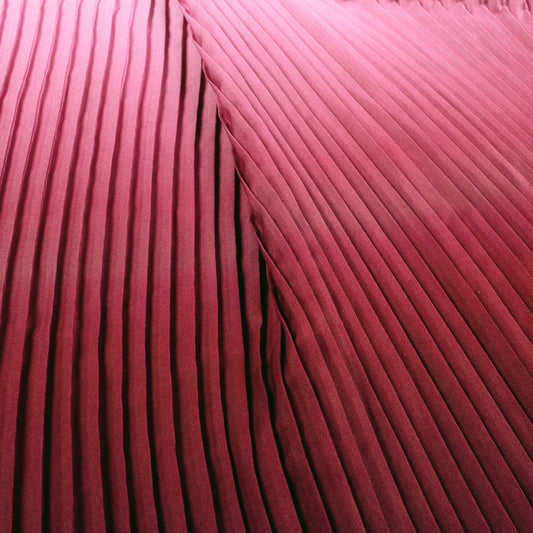
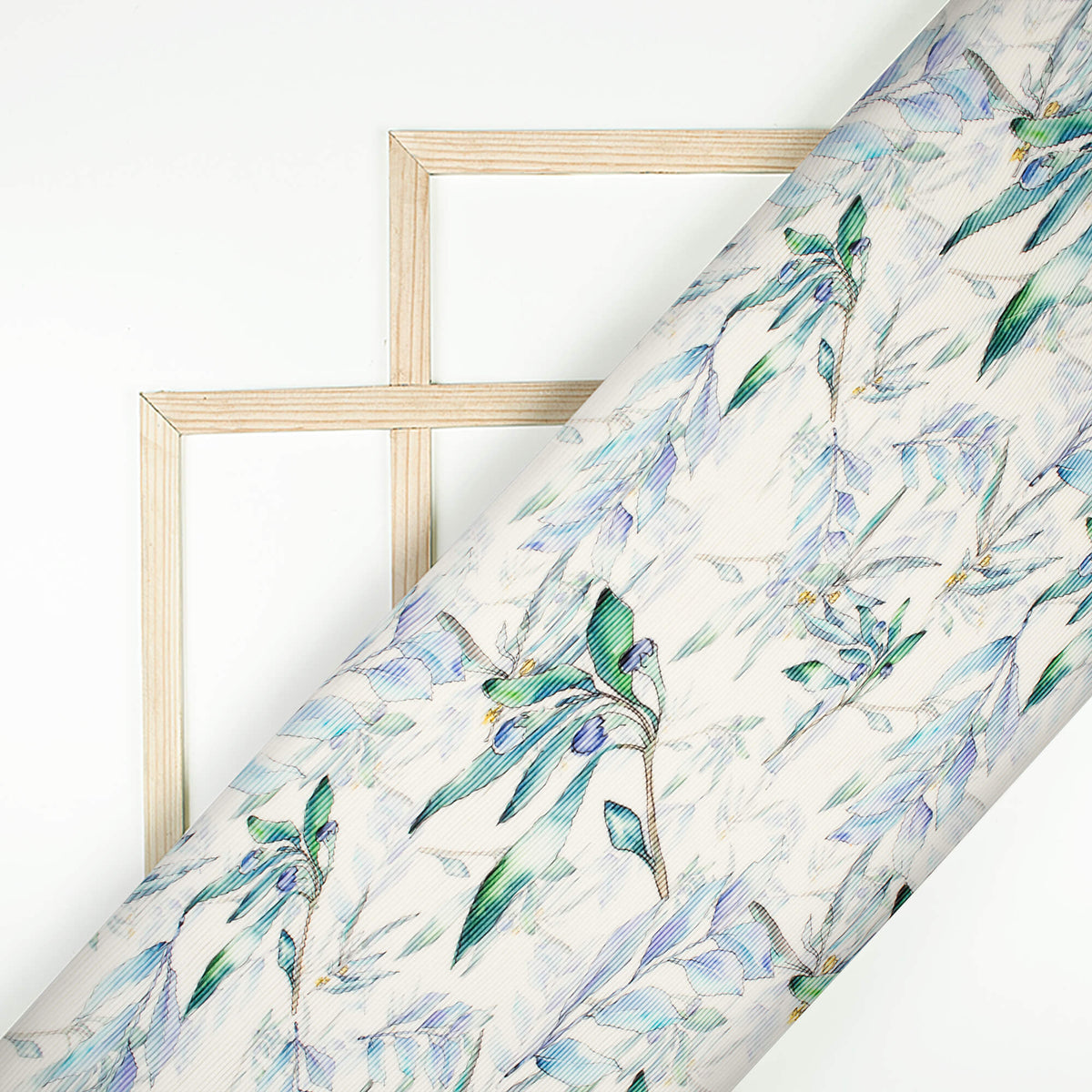

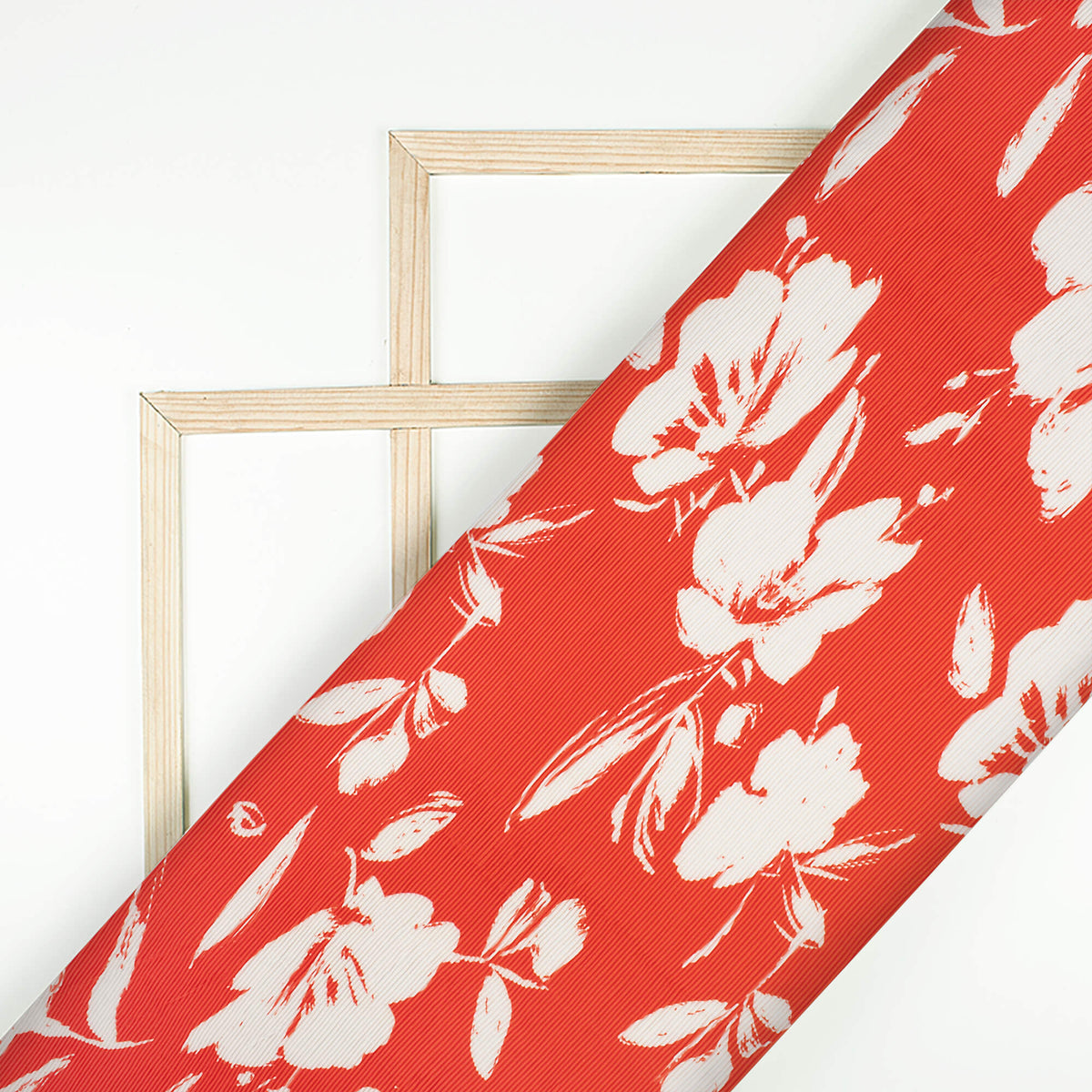
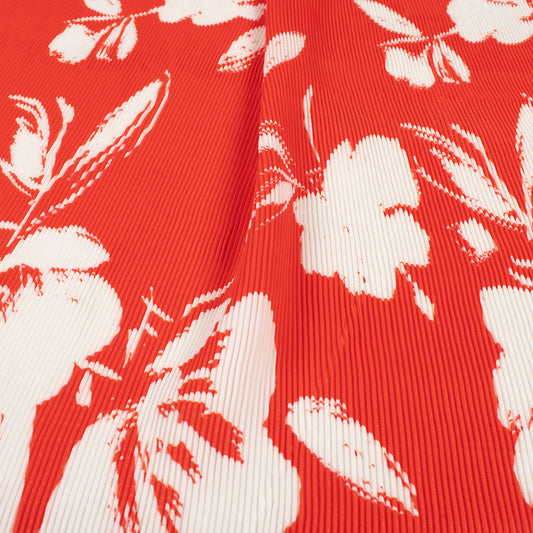 -7% offRegular price ₹ 599.00 /meterUnit price perSale price ₹ 599.00 Regular price
-7% offRegular price ₹ 599.00 /meterUnit price perSale price ₹ 599.00 Regular price
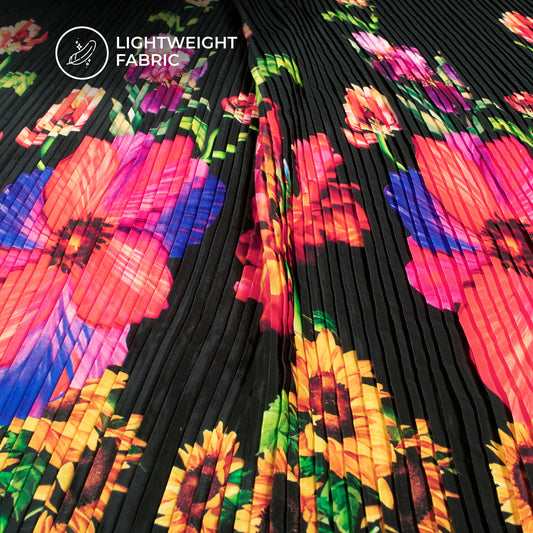 -7% off
-7% off
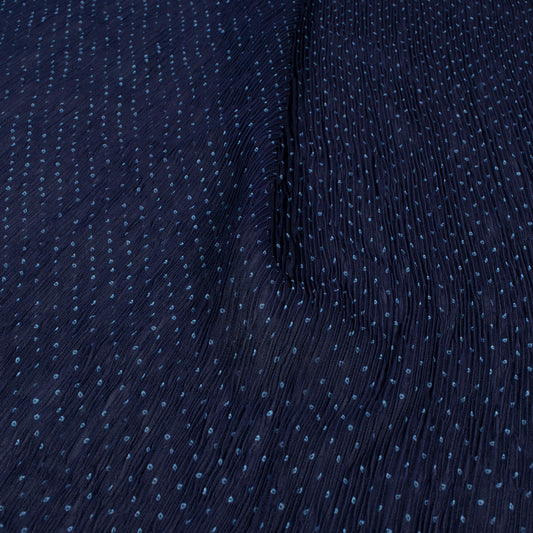 -8% off
-8% off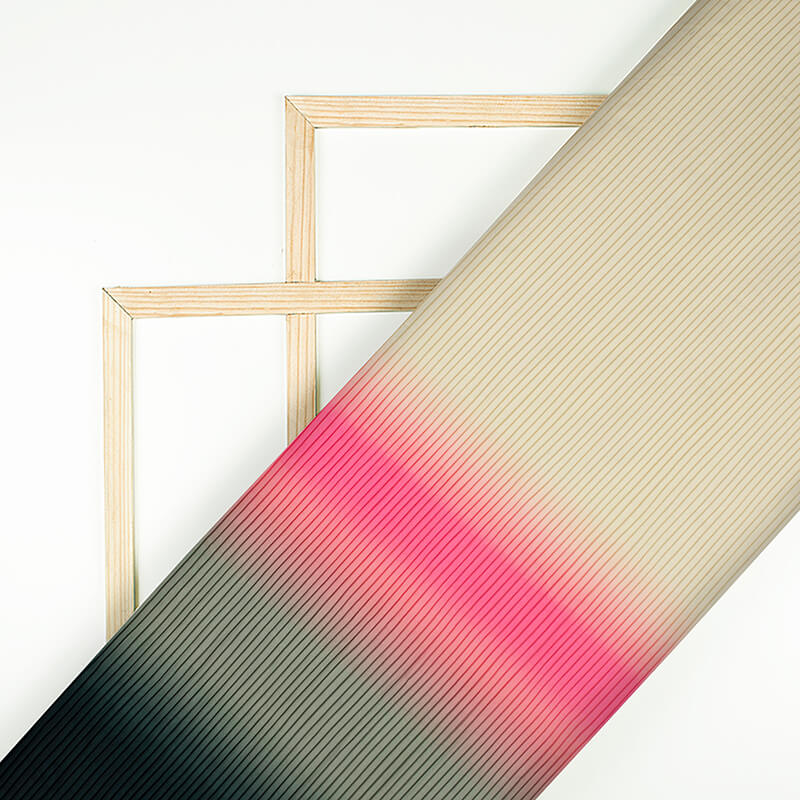
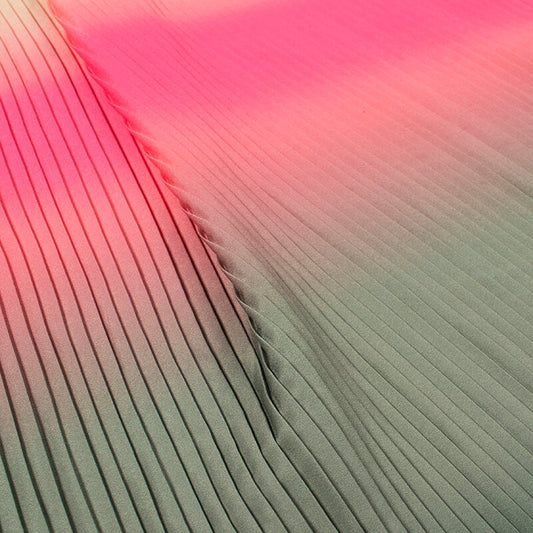 -4% off
-4% off
 -7% offRegular price ₹ 599.00 /meterUnit price perSale price ₹ 599.00 Regular price
-7% offRegular price ₹ 599.00 /meterUnit price perSale price ₹ 599.00 Regular price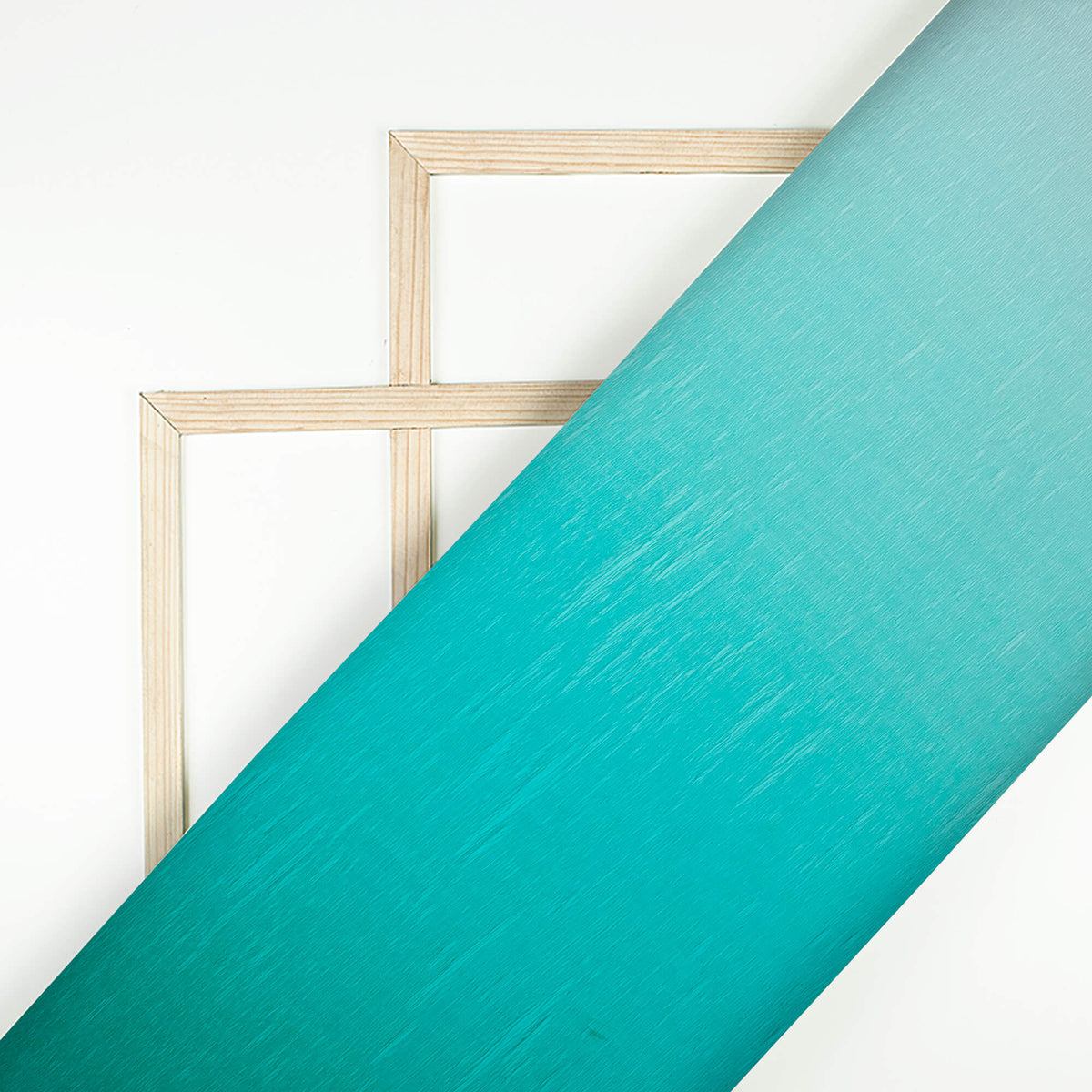
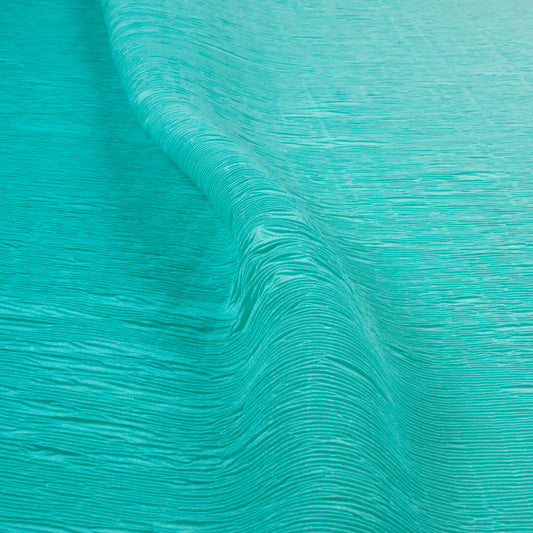 -7% off
-7% off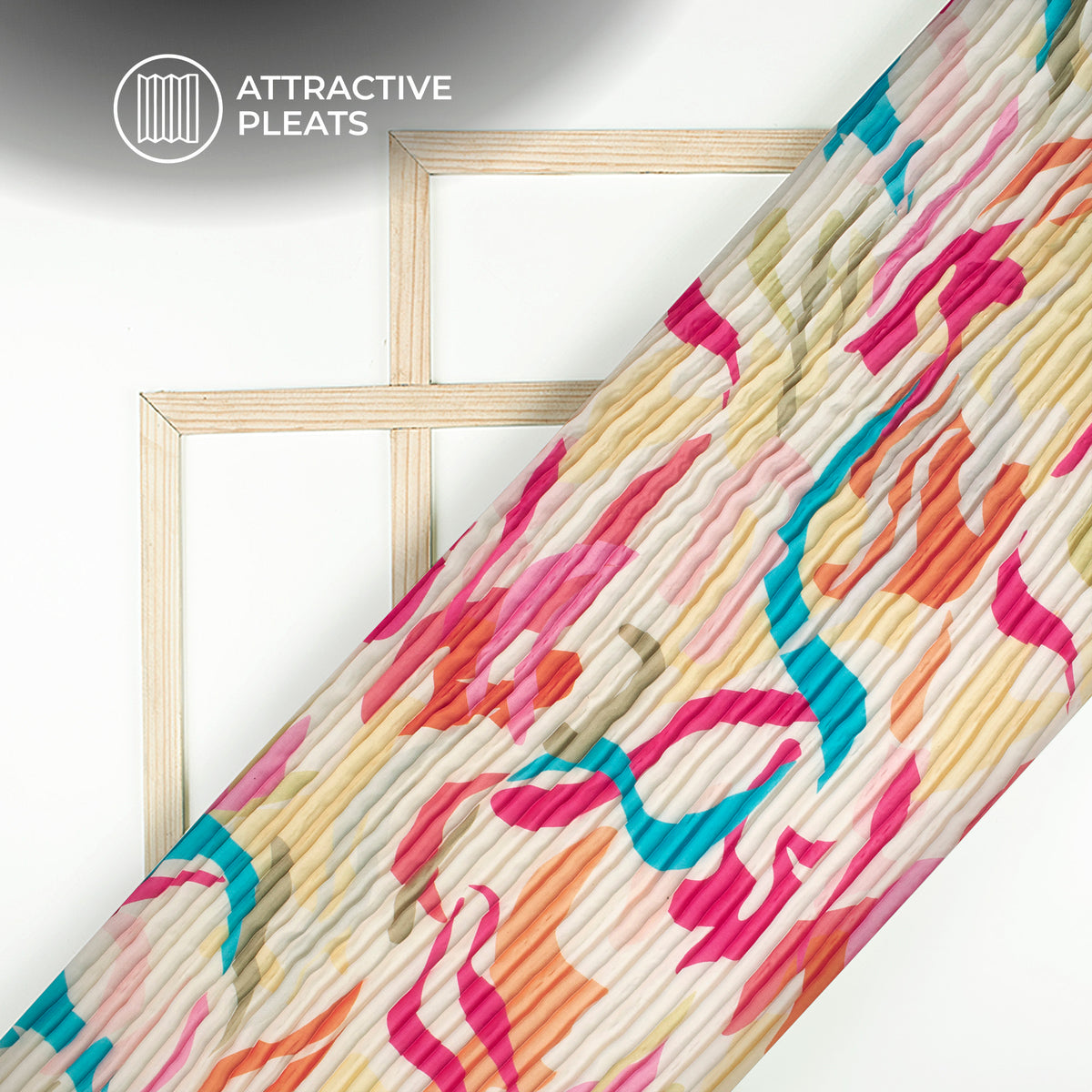
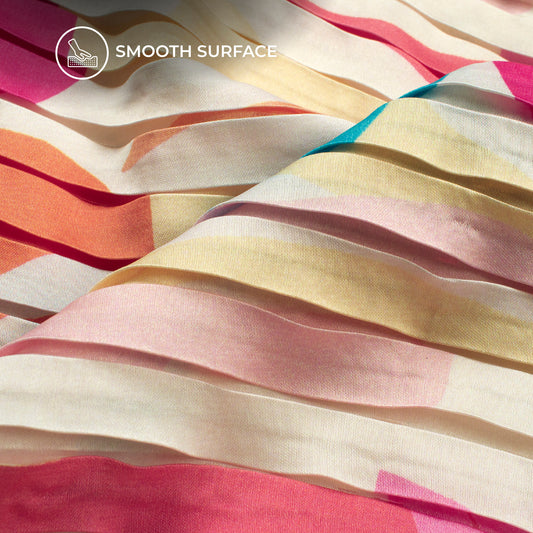 -7% off
-7% off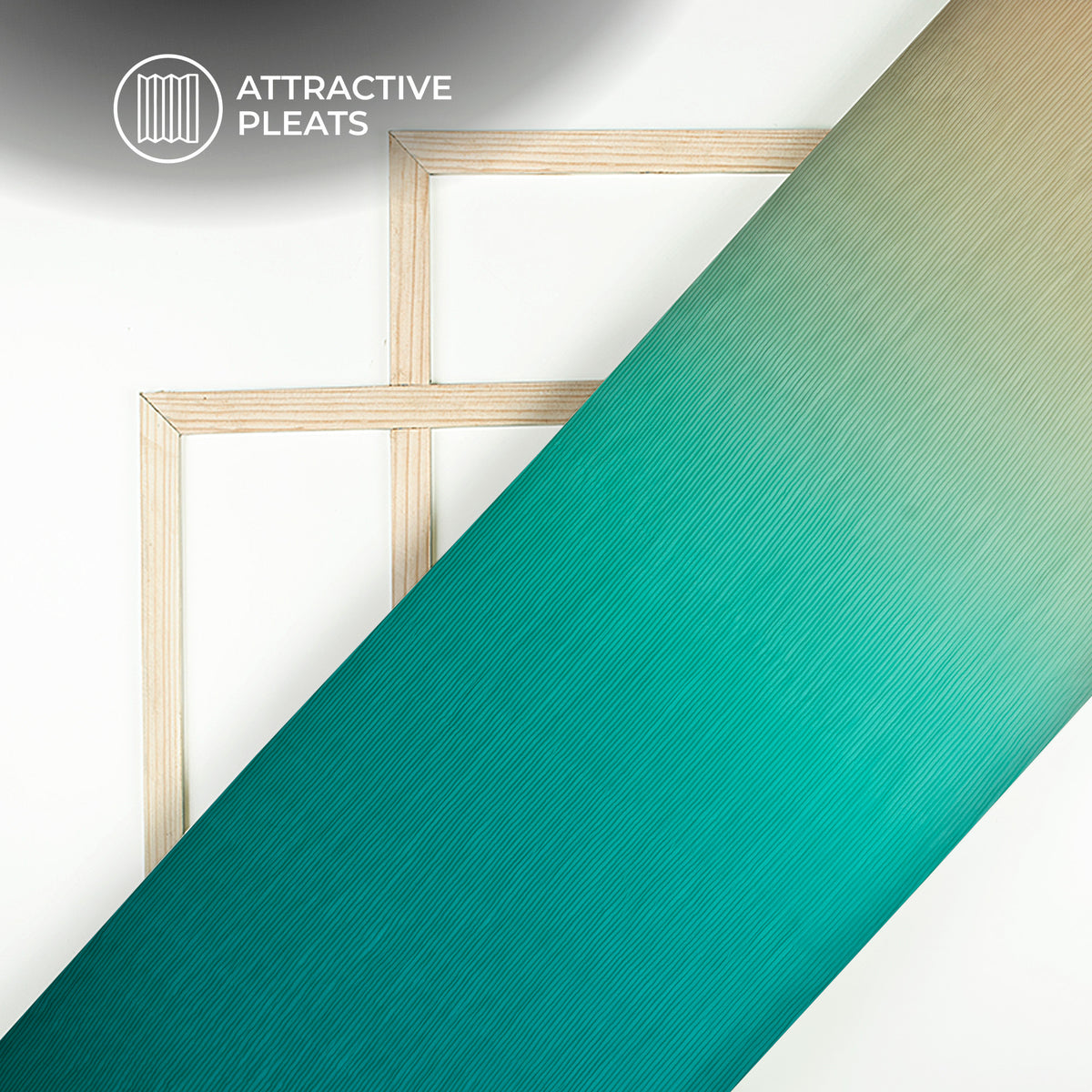
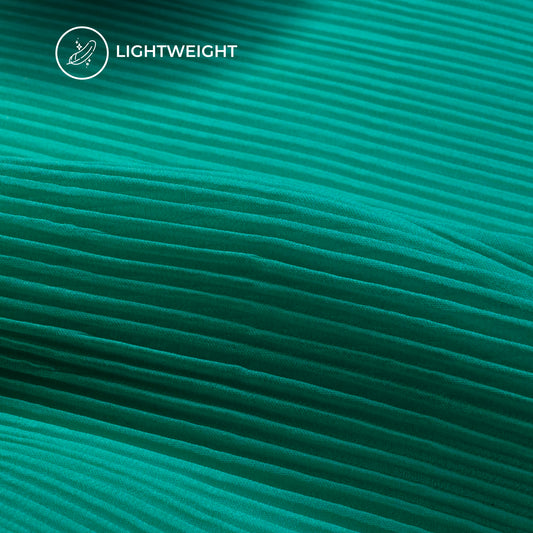 -8% off
-8% off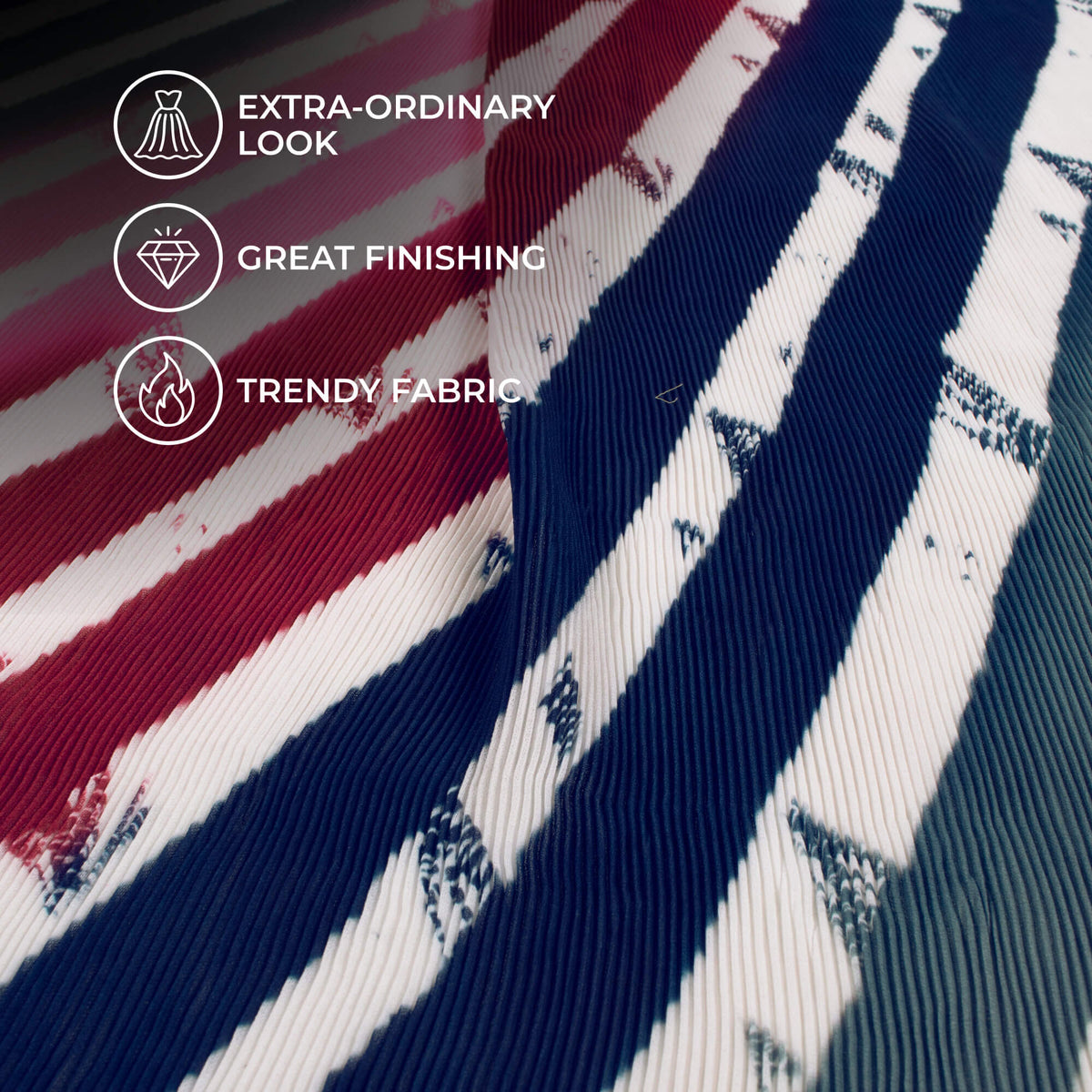
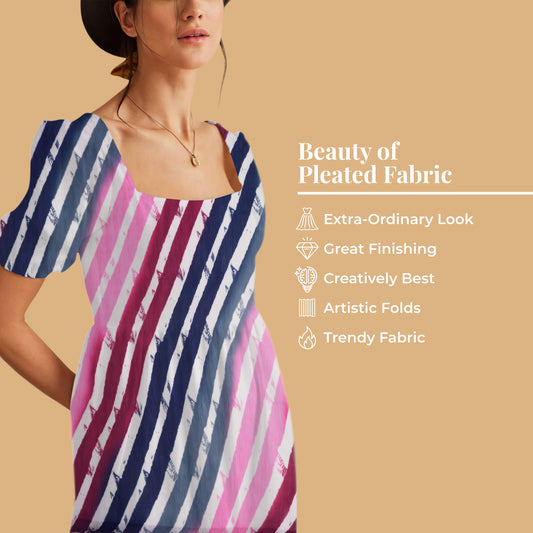 -8% off
-8% off


